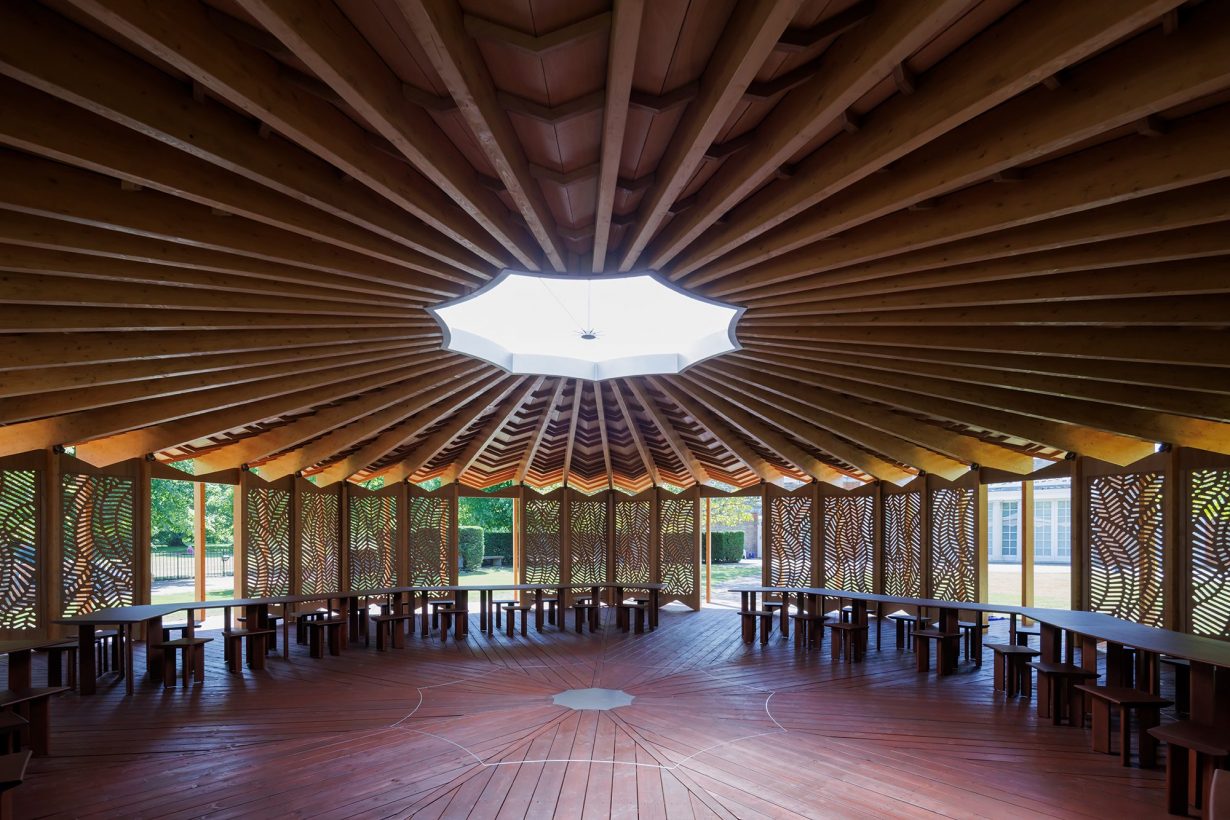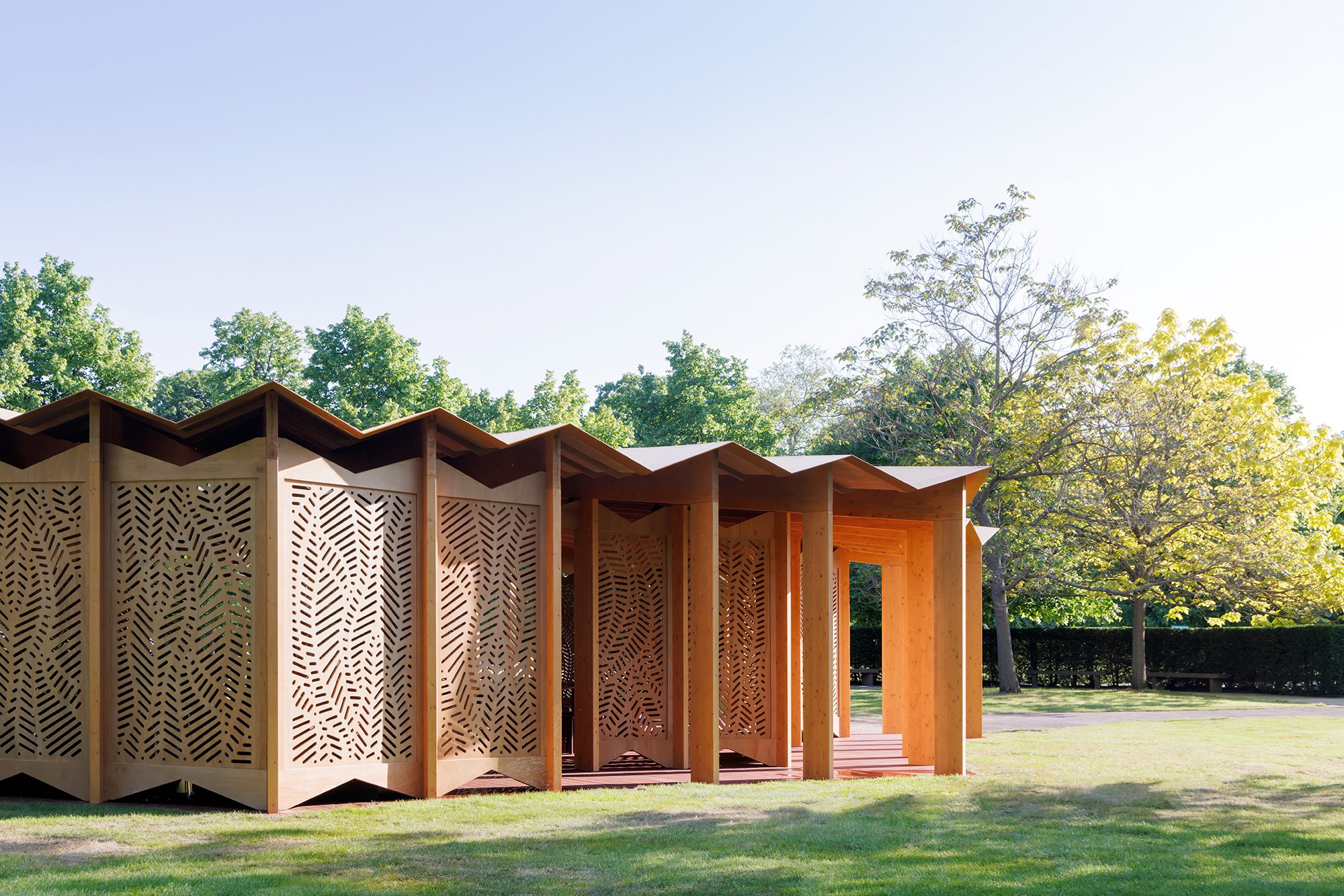The French-Lebanese architect makes grand claims for the connective power of food, but the inescapable presence of a bland chain café within her design leaves a bad taste
You could, at least in theory, do a Grand Tour of Britain while eating only at Benugo. Either despite or because of a complete lack of culinary identity, the caterer has become ubiquitous among museum and gallery cafés across the country. Starting your tour, you will find a Benugo at Skara Brae, a neolithic UNESCO World Heritage site in the Orkney Islands, and another on the mainland at the 18th century Fort George. Its competent if uninspiring sandwiches can be had at Edinburgh Castle and the National Museum of Scotland before, heading south, you follow a Benugo itinerary through all that is beautiful and wretched in the English character: Manchester’s Science and Industry Museum, Warwick Arts Centre, the Cheadle John Lewis department store, Bletchley Park. In London (the centre of gravity for this benign but pervasive culinary ghoul) there is Benugo at the Barbican Centre, the Victoria and Albert museum, the Zoo, the Science Museum and, most recently, Lina Ghotmeh’s newly opened Serpentine Pavilion.
Food is at the heart of this year’s project, part of an annual initiative that since 2000 has seen international architects design their first built structure in England. Ghotmeh’s pavilion is titled À table – an entreaty to convene, sit, eat and find a moment of togetherness at odds with the frenetic pace of modern life. The circular structure is made almost entirely of wood, an unobtrusive presence that never clears the canopy of the trees that encircle it. The roof is tapered so delicately at its edges that it has the air of a butterfly that has come lightly, if briefly, to rest. Inside, an undulating circle of tables (twenty-five of them, designed in collaboration with The Conran Shop) trace the edge of the room and in a recess along one wall of the structure, the Benugo café counter that will put this theoretical à table into practice, serving the usual coffees and cakes alongside a new menu co-created with the architect and grounded in her French-Lebanese roots.
In last year’s pavilion, designed by American artist Theaster Gates, the requisite cafe felt like an afterthought, shunted to one side of a chapel-like space. This summer has seen something of a cosmic rebalancing: the philosophy behind Ghotmeh’s pavilion is that ‘our “cuisine” grounds us,’ connecting us to ‘buried yet weathering archaeologies of past civilisations.’ Ghotmeh modelled the structure on low-ceilinged Malian toguna huts, designed to both facilitate and to deftly contain conflict by forcing dissenting parties to sit and talk rather than come to blows. The trouble is that this space performs the role of peacekeeper a little too well: the café has suffused the pavilion with its own relentlessly inoffensive vibes. The pavilion ought to be an architecturally significant work reluctantly incorporating a Benugo. Instead, it has become a Benugo reluctantly incorporating an architecturally significant work.

In many ways, I like Ghotmeh’s pavilion. I like the oculus in the pitched centre of the roof through which light filters inside, and the way that the greenery outside fractures the perforated wooden walls. I like an overpriced coffee in a quiet space. I like the idea of an architecture that doesn’t forget its foundational responsibility, at the base of Maslow’s hierarchy of needs, to provide shelter, maybe even warmth, maybe even food. But the idea that food can ‘bring us together’ (always the generalised us that speaks to everyone and nobody at all) troubles me, partly because it is untrue but mainly because it is boring. What about the ways that food disrupts? What about the ruinous potential of a dining table with the wrong attendees or in the wrong hands? Artists often talk about commensality (loosely derived from the Latin for coming together at the table) as a means through which harmony can be found, as though the most famous dinner in history was not one in which the head of the table announced his own death, passive-aggressively, to eleven friends and one traitor.
Eating together can be a powerful act. Sociologist Georg Simmel wrote about how collective meals could forge a sense of togetherness from disparate human parts. For philosopher Jürgen Habermas, coffee houses played a vital role in European intellectual and political upheavals in the 19th century by providing a third space – neither fully private nor public – within which people could gather, find refreshment and exchange ideas. There’s something of Ghotmeh’s ambition in this, although the togetherness of the coffee house was arguably more about the creation of a raucous in-group (and an out-group) than it was to do with humanistic cohesion.

There are other ways of navigating the tricky intersection between food and artistic practice. At SOE Kitchen in Berlin, the artist Olafur Eliasson has for several years presided over an office kitchen which, unlike the usual nook with a microwave and a couple of grubby ‘World’s Best Mum’ mugs, functions almost as a restaurant, serving hot meals prepared by a team of chefs. As well as the eating being nominally communal, it is governed here by a more substantive set of ideas: the initiative is, at least in part, an effort to keep the studio staff and visitors happy, healthy and (presumably) productive. At the Fondazione Prada in Milan, the Wes Anderson-designed Bar Luce gives physical form to the wistful symmetries of the director’s cinematic oeuvre, and the food is almost incidental. The meals staged by Lucy and Jorge Orta, which range from intimate dinners to performances with 900 guests, deliberately and consistently refuse to be reduced to a nebulous ‘hospitality’. At one event, The Murmuring Banquet, diners were regularly interrupted by performers monologuing about water scarcity. There is of course a coming together in these spaces, but there is friction too, and self-interest, and a tightly held artistic and creative control.
Ghotmeh’s pavilion was described in one review as bossy, although I suspect the opposite is true. There’s not enough here, in this determinedly gentle structure, to really own the premise on which it was built. It has air, and space, and a slushie machine, and fifty-seven little Conran Store-designed stools in reddish oak, but in the absence of a genuinely directive approach to communal dining, it is animated by little more than the commercial interests of the Benugo it houses. At best there is ‘a moment of conviviality’, but this is hardly the same as the space for debate, community and engagement that Ghotmeh had envisaged. À table feels less like the imperative of the original French and more like an observation: a table, or twenty-five, in a big round room.
Ruby Tandoh is a London-based food writer and author
